When Apple announced the original iPad back in January last year I must admit that I was underwhelmed. Watching the keynote presentation afterwards a lot of people present in the room seemed to feel the same way, so subdued was the audience reaction. I’m not quite sure what we were expecting from the long rumoured and awaited Apple tablet, but it was surely more than the outsize iPod touch that Apple had apparently delivered.
Had the iPad launched in 2007 before the iPhone then it would have been a different story and I’m sure that the iPad would have received the same rapturous welcome that its smaller cellular brother received when first revealed—although I think the iPhone is all the more impressive for having the smaller form factor. It’s been said that the two devices came to market out of sequence and that the iPad was actually designed and developed first. Whether that’s true or not we don’t really know, but it certainly seems plausible.
Perhaps the biggest difficulty I had with the iPad was that I couldn’t quite see what it was for, in spite of Steve Jobs’s speech during the keynote saying that Apple had wrestled with, and solved, the core issue of their tablet’s raison d'être. There was a lot of emphasis placed on how people would “get it” when they actually held an iPad in their hands and used it. We were told that the whole was greater than the sum of its parts and that once we’d got to “hold the Web in our hands” the iPad as a proposition would make sense. This was marketing hype of course, but fast forward a few months to my first play with an iPad in an Apple store and I could see that there was actually some substance behind the hype.
I was already familiar with the joy of using Apple’s multi-touch interface from my iPod touch and the iPhone that later replaced it, but somehow the larger display added an extra dimension to the experience. There was something intangible but pleasurable about holding and interacting with a live Web page at near A4 size in your hand. It felt as if the whole touch experience had been designed for this screen size all along. It’s very hard to describe, which is perhaps Apple’s biggest challenge when it comes to pitching the iPad. Not too much of a challenge though, because the iPad has been a smash hit with consumers, surprising many so-called industry experts who wrote it off as a mere toy or luxurious frippery.
I didn’t buy a first generation iPad. Instead I vowed to wait three years for the third generation model, just as I had delayed my purchase of an iPhone until the 3GS came out in 2009. Having had the chance to try one, I knew that there was undoubtedly something special about it though and I found myself increasingly wanting one as I spent more time playing with it during idle moments in various stores. So I was even more interested than usual in what Apple had lined up for the launch of its successor last month.
It came as no surprise that the iPad 2 was thinner, lighter and faster, but it was the software on display that really shone, particularly GarageBand. I spent quite a while evaluating whether I should buy an iPad 2, and in all honesty I think my head said no but my heart said yes. My heart won out, I’d reached that tipping point and decided that I was going to buy one; waiting another year be damned!
Purchasing Pains
With the difficult decision of whether or not to having been made, it was time to move to the pleasurable and easy stage of actually buying the thing. At least that’s what I thought! Getting hold of an iPad 2 at the moment is not easy. These things are like gold dust. I quickly decided to go for the black 64 GB Wi-Fi model and ordered it online directly from Apple during the morning of the 26th of March—a day after it went on sale in the UK In hindsight I should have ordered it the day before, because the store quoted me a delivery time of three to four weeks, whereas on the morning of the launch it was a mere two to three weeks.
I went for the black variant because I’d heard that the screen reflections could be distracting with the newly-introduced white model. I went with the largest capacity because I didn’t want the hassle of having to manually manage the subset of content that I would sync to the device, as I have to with my 32 GB iPhone. Plus I wanted plenty of room for the future. If you look at the cost of flash memory storage and compare it to the price differential between each iPad capacity increment then it’s obvious that Apple are nickel-and-diming you as the Americans would say, but as the iPad RAM isn’t user upgradeable there’s not a lot you can do about it. Finally, I went for the Wi-Fi model rather than its 3G brother because at some point I might be in a position to get my iPad online using the Personal Hotspot feature on my next iPhone (dependent on the carrier cost, of course). Plus I shall mainly be using my iPad at home where a fast Wi-Fi connection is on tap.
Frustrated with the long delay until my online order was fulfilled, in the meantime I decided to chance my luck at buying a new iPad from an Apple retail store, with the intention of cancelling my online order if successful. With this in mind I ventured to my local Apple Store on the 1st of April, a Friday. Getting my hands on the demo iPad 2 and putting it through its paces confirmed that I’d made the right decision and now I really wanted one! Unfortunately the “Apple Genius” told me that the only way to get hold of a new iPad from them was to reserve online twenty four hours previously. I tried various other stores in the shopping centre but they all told me that iPad 2s were selling out as soon as they arrived.
I also tried the local Argos superstore, where their customer-facing computer told me that they were out of stock of iPad 2s, but helpfully suggested three nearby stores where I could reserve one. Amazed, I picked the nearest store to home and made a reservation. I went to the store the following morning to pick up my reservation, but immediately knew something was wrong when I entered my reservation number and it came up on screen that this iPad was discounted by £120! The Argos computer had helpfully reserved a black 64 GB Wi-Fi first generation iPad for me, leaving me to leave the store empty-handed and somewhat disheartened.
I knew that Apple’s online reservation system wasn’t available until nine o'clock every night and not being one to give up easily, that Saturday evening I tried to make a reservation. However, the site was unresponsive, both timing out and repeatedly losing my session. It was obviously getting hammered. As I was also off work the following Friday, I made a mental note to try to reserve an iPad the following Wednesday for pick up on the Friday. I also knew that iPad reservations became unavailable within minutes, so I’d have to be quick.
Wednesday evening came and I started to hit the Apple reservations site using both Safari and Chrome at ten to nine. To my amazement at 20:59 I broke through and was successfully able to reserve the model I wanted. I signed in with my Apple ID and got to the last step in the reservations wizard where it asked me which half hour time slot I wanted for collecting my iPad during…Thursday! Due to work commitments I was unable to re-arrange my leave for the next day, so much to my annoyance I had to abandon my reservation. I tried again the following evening, but perhaps unsurprisingly I wasn’t one of the lucky punters who was able to reserve an iPad that night.
I tried to make an online reservation again on the Friday evening but again without success, so I gave up at that point. Although I don’t generally give up easily, there does come a point with these things when you have to call it a day, accept that it’s just not happening and move on. I’d just have to wait for my online order to come through—it was only a few weeks, after all. Then something unexpected happened. I got an email from Apple on the 13th of April telling me that my iPad was shipping! I don’t know why I was so surprised because Apple have shipped things to me earlier than they said they would before.
iPad 2 World Tour
The acquire-an-iPad 2 game that I was embroiled in had now moved to the next level and it was time to play guess the delivery date! Fortunately I had the UPS tracking number on my side, so I was able to pinpoint my iPad’s whereabouts in some detail:
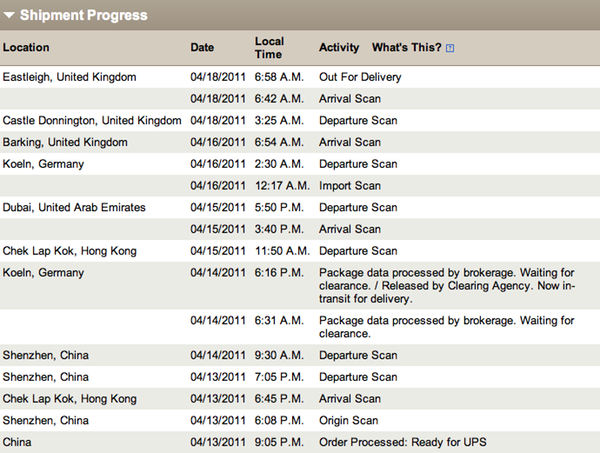
—I must admit that the frequent trips to Cologne nearly threw me off the scent until I came to the realisation that my package had never actually been to Germany and that it was actually some paperwork process that was happening there in parallel! My iPad 2 was finally delivered into my eager hands on the 18th of April. Somewhat spookily the UPS delivery man asked me if my package was an iPad 2 and when I confirmed this he said they were all they were delivering at the moment—in his words, loads of them. I guess when you have a van full of the things you soon get to recognise the parcels.
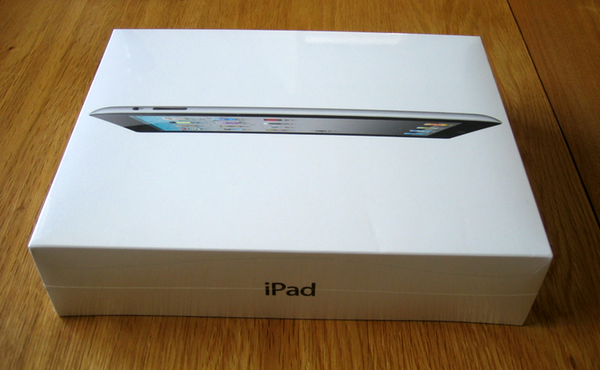
First Impressions
The iPad 2 comes packaged in the exquisite minimalist style that Apple has become famous for, although nowadays their packaging is less extravagant and much kinder to the environment than it used to be. Remove the snugly fitting box lid and the iPad is the first thing you see, covered in a protective, transparent film. Lift it up and move it aside for a moment if you can bring yourself to and there’s a white envelope with the usual “Designed by Apple in California” tag line printed on the front. This contains the sparse double-sided instruction sheet, the warranty information and the usual couple of Apple logo stickers. The only other bits you get in the box are the Apple dock cable and the power brick with its plug-in UK plug attachment.
I noticed immediately that the iPad doesn’t share the unfeasibly compact combination plug and power adapter that the iPhone uses. Be aware that you do need to charge the iPad using the electrical accessories it comes with because they’re rated at 10W to handle the increased power its capacious batteries need for optimum charging. I made the mistake of trying to use a standalone Apple USB power adapter I had to hand, with the result that the iPad was taking an age to charge. This turned out to be because the adapter I was using was only rated at 5W. Which also explains why the iPad doesn’t charge over USB whilst connected to a computer, or at least that’s not the case with my late-2006 vintage iMac.
The iPad 2 feels simply gorgeous in your hands. It’s usefully thinner than the original iPad—actually a third thinner, making it thinner than an iPhone 4—and is exactly the right size for a tablet. Count me in with the seven-inches-is-too-small-for-a-tablet naysayers. The perfect feel of the iPad in your hands is no co-incidence or one of life’s happy accidents. It’s down to Jony Ive’s design department experimenting with hundreds or perhaps even thousands of prototypes to arrive at the iPad form factor. This is evolutionary and iterative industrial design par excellence. Best of all, the new iPad is noticeably lighter than the original, which I always felt was on the heavy side. Certainly too heavy to comfortably hold in one hand. Expect future iPads to become lighter and perhaps thinner still, although I think the batteries are the main constraint here, comprising as they do most of the volume and bulk.
The iPad 2 has a different cross-sectional design from its predecessor. It’s lost the flat edges and has an iPod touch-like rear that curves upwards at the edges towards the screen at an angle approaching forty five degrees. One surprising consequence of this is that the vertical edge of the still-proprietary Apple dock cable doesn’t mate with the tapered aluminium edge of the iPad. Instead there’s a roughly triangular gap where the actual connector contacts are exposed side-on. It’s a little disconcerting the first time you hook the iPad up because it feels as if there’s not enough physical contact to hold the cable securely in place, but in practice it works fine.
You turn the iPad on using the button located in the customary top right location and it boots fairly quickly (about twenty seconds), certainly in less time than my iPhone. When the screen comes to life for the first time you’re struck by how crisp it is and how vivid the colours are. One of the considerations that gave me pause for thought before ordering an iPad 2 was the persistent rumours that a version equipped with Apple’s high-resolution Retina Display would be announced this year. Of course it’s only April so that still might happen, although driving a 2048 x 1536 pixel display whilst maintaining the iPad’s famous excellent battery life is quite the engineering challenge. Only time will tell whether Apple have already solved it, but in the meantime I can honestly say that the iPad 2’s display is fabulous, at least to my eyes. I can’t find fault with it.
The most disappointing part of the iPad 2 first run experience comes when it has finished booting and you are presented with a graphic telling you to sync with iTunes. By this point you just want to get on and explore your new toy, but instead you have to plug it in to your computer, register it with Apple (if you want to) and copy over any existing media files and applications you might have. In my case this was a time-consuming exercise, as my iTunes library contains over 3,200 tracks and I have gigabytes of videos—mainly from PeepCode—and numerous apps. It makes for a frustrating experience and this is an area where Android is ahead with its sign-in-to-Google-and-copy-account-data-from-The Cloud approach.
Clearly the iPad has to be populated with your media content at some point, but I would have liked the option to postpone this step until when I was ready to commit to the time involved. It was made even more irritating because I subsequently deleted all of my iPhone-only apps that had been automatically installed on the iPad, because running them in a small rectangle in the middle of the screen or in pixellated form at double the original resolution doesn’t appeal. Much has been written about the iPad’s dependence on being tethered to a computer, so I don’t intend to go into it here, but suffice to say it would give me pause for thought before recommending one to a non-computer owning relative unless I could perform that initial sync myself first, by which time the iPad wouldn’t be in a pristine and unopened condition. I believe that Apple will also go through it with you at their retail stores, but personally I wouldn’t want to do that given how busy and crowded they get. It’s nicer to make your setup choices in the comfort and relaxed atmosphere of your own home.
Now that you’ve finally got your iPad 2 up and running it’s time to get stuck in and start using it properly. One thing I’ve noticed is that the accelerometer is very sensitive, which means that the iPad will easily swap display orientation, sometimes when you don’t want it to. Fortunately in iOS 4.3 Apple reintroduced the ability to use the switch above the volume rocker to lock the current orientation, a feature they removed to much public outcry in iOS 4.2, when the switch suddenly changed to muting/unmuting the volume. Now there is a software setting to control its purpose, which is the ideal.
Talking of the Settings app, I must admit that I was initially puzzled to see the setting for selecting the current ringtone in there, carried straight over from the iPhone. I assumed that this must be a harmless—but untypical—mistake, but then my faith in Apple’s attention to detail was restored when I remembered that the iPad 2 can make FaceTime calls over a Wi-Fi connection, presumably therefore requiring a ringtone to draw attention to an incoming video call.
I hardly ever use my iPhone in landscape orientation but the iPad is a different matter. The on-screen keyboard’s keys feel the same size or perhaps even slightly larger than those on Apple’s current range of physical keyboards. This means that it’s possible to touch type after a fashion and to this end the virtual keyboard even has virtual bumps on the F and J keys! It’s a cute gimmick but obviously they don’t actually help you correctly locate your index fingers on the keys. The iPad’s screen has a pleasing plastic-like springiness to it when typing, which is an interesting achievement considering that it’s made from toughened glass.
Accessories
No iPad 2 is an island, so with that in mind I bought a couple of first party accessories, namely a polyurethane Smart Cover and the HDMI AV adapter. The Smart Cover is really a remarkably clever piece of engineering and rather than try to describe it to you, you really should watch Apple’s charming demo short to get the idea if you haven’t seen it already.
The Smart Cover does have a couple of slight problems though. Firstly, when closed it feels like it would benefit from having some magnets along the top and bottom edge or just a stronger magnet along the right-hand edge, because it is possible for the folds in the cover to bunch up a little. The other issue is that when folded into a prism to act as a stand, the microfibre cloth is on the outside and therefore in contact with whatever surface it’s resting on. This might be a problem if that surface is dirty, but really this is just nit-picking. Taken as a whole, the Smart Cover is an ingenious, intriguing and pleasing design and I bet that Apple are going to sell almost as many as the iPad 2 itself.
I must admit that the HDMI AV adapter was an impulse buy. My partner and I wanted to watch the First Orbit film that celebrates fifty years since Yuri Gagarin first orbited the Earth, but we didn’t fancy having to sit in front of the computer in order to watch the 100 minute film on YouTube. Armed with the AV adapter I can now stream the video to my iPad over Wi-Fi and we can watch it on our television in more comfortable surroundings. The iPad display mirroring over HDMI works exactly as you’d expect and the content looks great on the bigger screen.
GarageBand
If you have an iPad 2—or even an original iPad—and you enjoy music and having fun then you owe it to yourself to buy Apple’s GarageBand app, whatever your level of musical ability. It’s an absolute steal at £2.99 from the App Store. GarageBand for the iPad achieves the accolade of probably being the best piece of software I’ve ever encountered; that’s how good it is to use.
If you’ve ever used GarageBand to make music on a Mac then you’ll know how much fun it can be, but forget everything you know about what it’s like to use, because the iPad version takes it to a different level. Although the basic functions of playing an instrument and sequencing tracks together to form a song are the same, the new version fully takes advantage of the iPad’s hardware capabilities. This is best experienced when playing a virtual instrument.
Most of us are used to the multi-touch interface by now, so being able to play chords on an on-screen piano keyboard should hold few surprises. However, GarageBand for the iPad features what electronic musicians refer to as velocity sensitivity, which means that the tone of the note changes according to how hard—technically how quickly—you hit the keys. GarageBand employs the iPad’s accelerometer and some very clever programming to make its virtual instruments velocity sensitive. The result is that you can play the app’s grand piano gently or attack it wildly. Similarly, tap out a gentle rhythm on a virtual drum kit or go nuts like Animal.
The design of both the user interface for GarageBand’s instruments and how they respond to being played really is exceptional. Switch from the grand piano to a 1970’s synthesizer and the whole look and feel updates appropriately. New instrument-specific controls appear as appropriate. For example, you get drawbars to vary the tone of a Hammond organ or an arpeggiator to replay repeating note sequences on a synth. You can mute and bend the strings on the guitar instruments and pass the sound through various effects boxes. It’s all so well done and amazingly realistic.
The iPad is a digital device so it will never have the infinite number of subtle nuances that a real musical instrument has, but that’s not the point. What is the point is that GarageBand on the iPad makes playing and composing music almost game-like in terms of how enjoyable it is. And if you can play a real keyboard or electric guitar, then (with some additional hardware) you can plug it in anyway and make interesting new sounds through the iPad, and also record your work. If you can’t play a real instrument then this should inspire you to pick one up. If we’d have had iPad 2s running this software in the music rooms at my school then I’m sure that I would have pursued a music qualification of some sort.
I’ve written a lot about GarageBand here, but that’s because it really does showcase the iPad’s unique abilities. In some ways it’s more limited than its Mac cousin, but you simply don’t notice because it plays to the iPad’s strengths so well. The multi-touch interface and the superb design of the software combine to make the whole experience feel more intuitive and intimate than the desktop version. GarageBand is from a confident Apple leading the way by creating a remarkable piece of software that should hopefully inspire third-party developers to author their own unique iPad software.
Who Is The iPad For?
At the start of this piece I mentioned that the biggest difficulty I had with the original iPad was that I couldn’t quite see what it was for and that Apple’s biggest challenge was describing how great it feels to hold in your hands and use. After having owned my iPad 2 for a week I still don’t have a definitive answer to the first question, in spite of which I keep picking it up and using it. Forget bullet points of technical specifications, in terms of actually feeling personal to use the iPad 2 is the ultimate personal computer. It’s an intimate computer.
Rather than worry about trying to pigeonhole the iPad into outmoded product categories, I think it’s beneficial to reframe the question and ask who the iPad is for. This question is much easier to answer. The iPad is for people who have never bought a computer before because they’ve been scared off by the technical complexity of the PC or even the Mac.
The iPad is also for people who have been burned by years of using Windows PCs that have to download endless updates whenever you try to use them, or inexplicably slow to a crawl after several months of ordinary use. PCs that become riddled with viruses and nastyware and that go bad, requiring you to call in the “PC expert” of your acquitance to sort out. The sales success of the first generation iPad shows that there’s massive pent-up demand for a simpler computing appliance—an app console if you will—that suffers from none of these problems. Which is also an attractive proposition for those of us who historically have been that PC expert fixing family member’s PCs, by the way.
As Apple’s competitors are discovering, you underestimate the powerful appeal of things that just work to your cost. Let’s be clear that the iPad 2 is by no means perfect, but I think the description “the computer for the rest of us” Apple used to advertise the original Macintosh in 1984 could have been made for 2011’s iPad 2. The difference this time is that the iPad has the right price and consequently the mass market sales figures to match the words, and deservedly so.
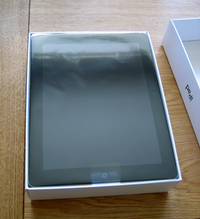
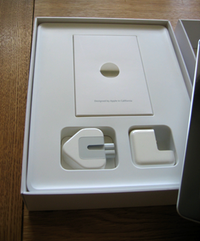
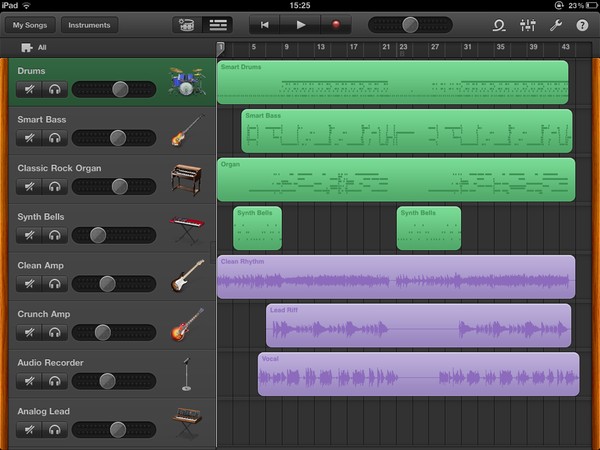
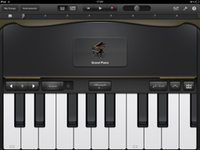
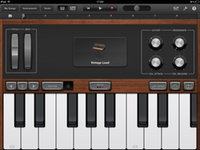
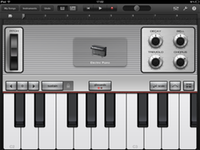
Comments
There is 1 comment on this post. Comments are closed.
you should have tried PCWorld. I tried to get my hands on a Xoom there (they got the exclusive Xoom WIFI distribution rights in the UK), and they got tons of iPad-2s there ... to the extent that I had difficulties getting their iPad sales clowns off my back.
... and yes, they didn't have any Xooms in the store :-(